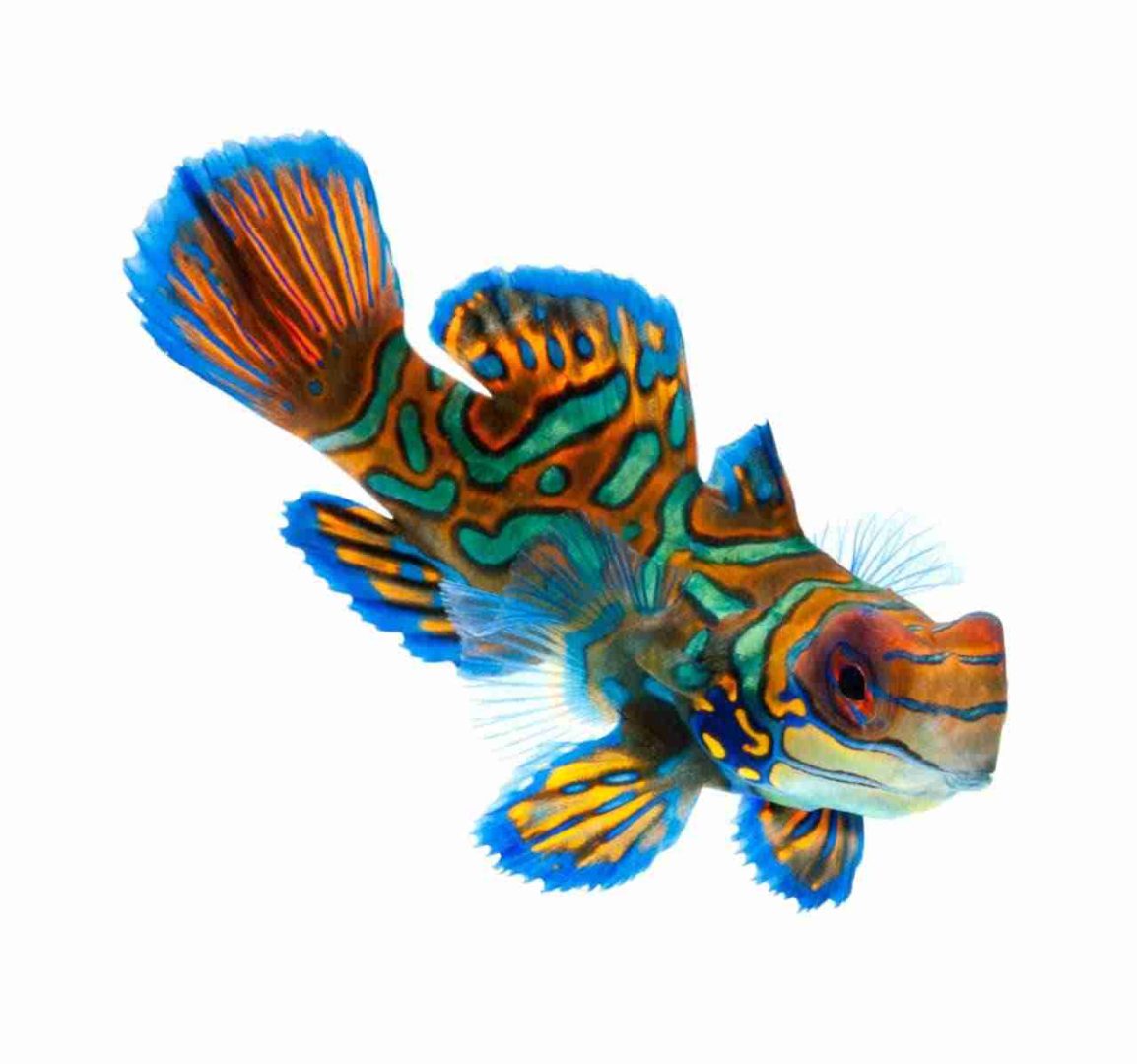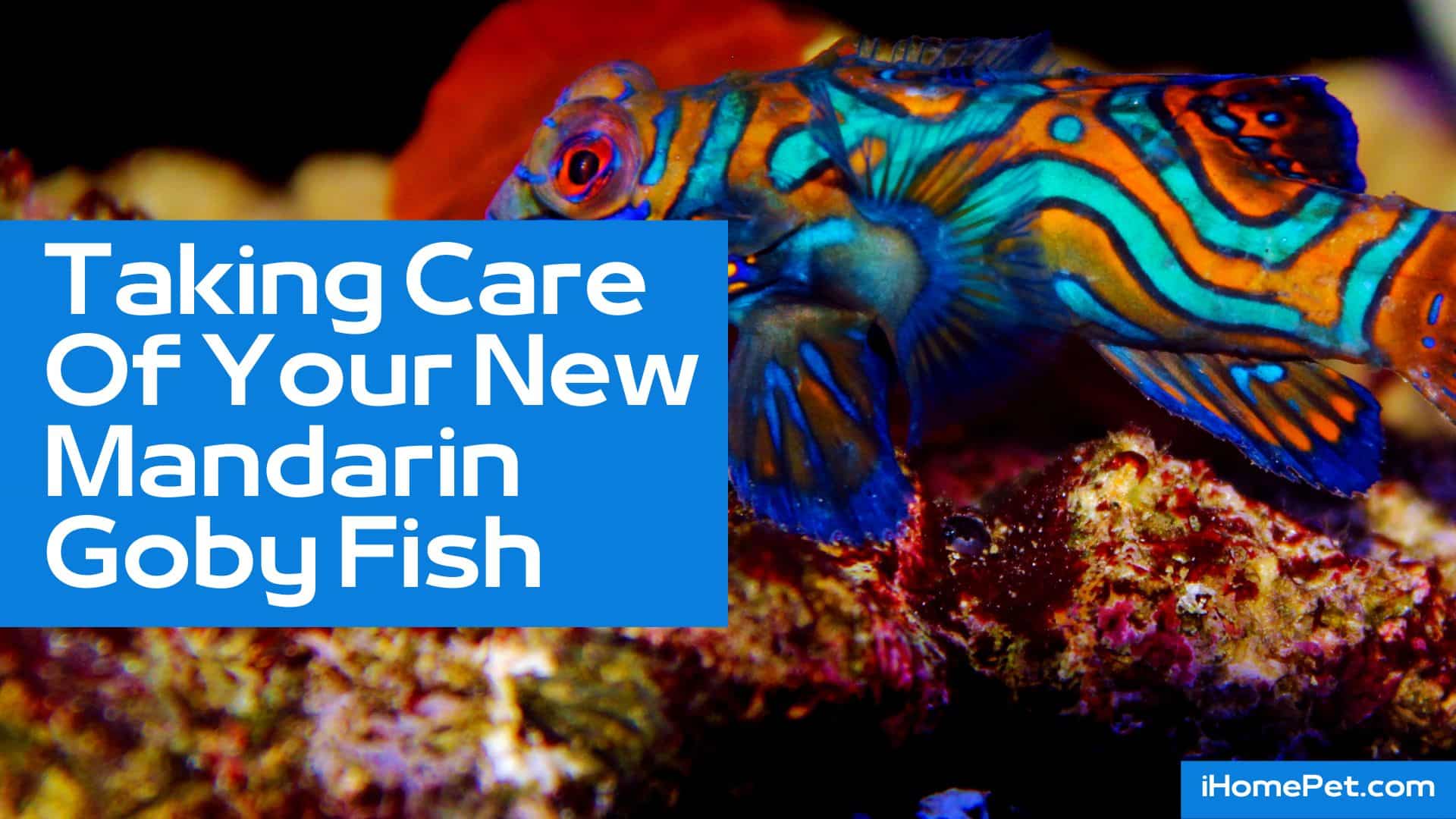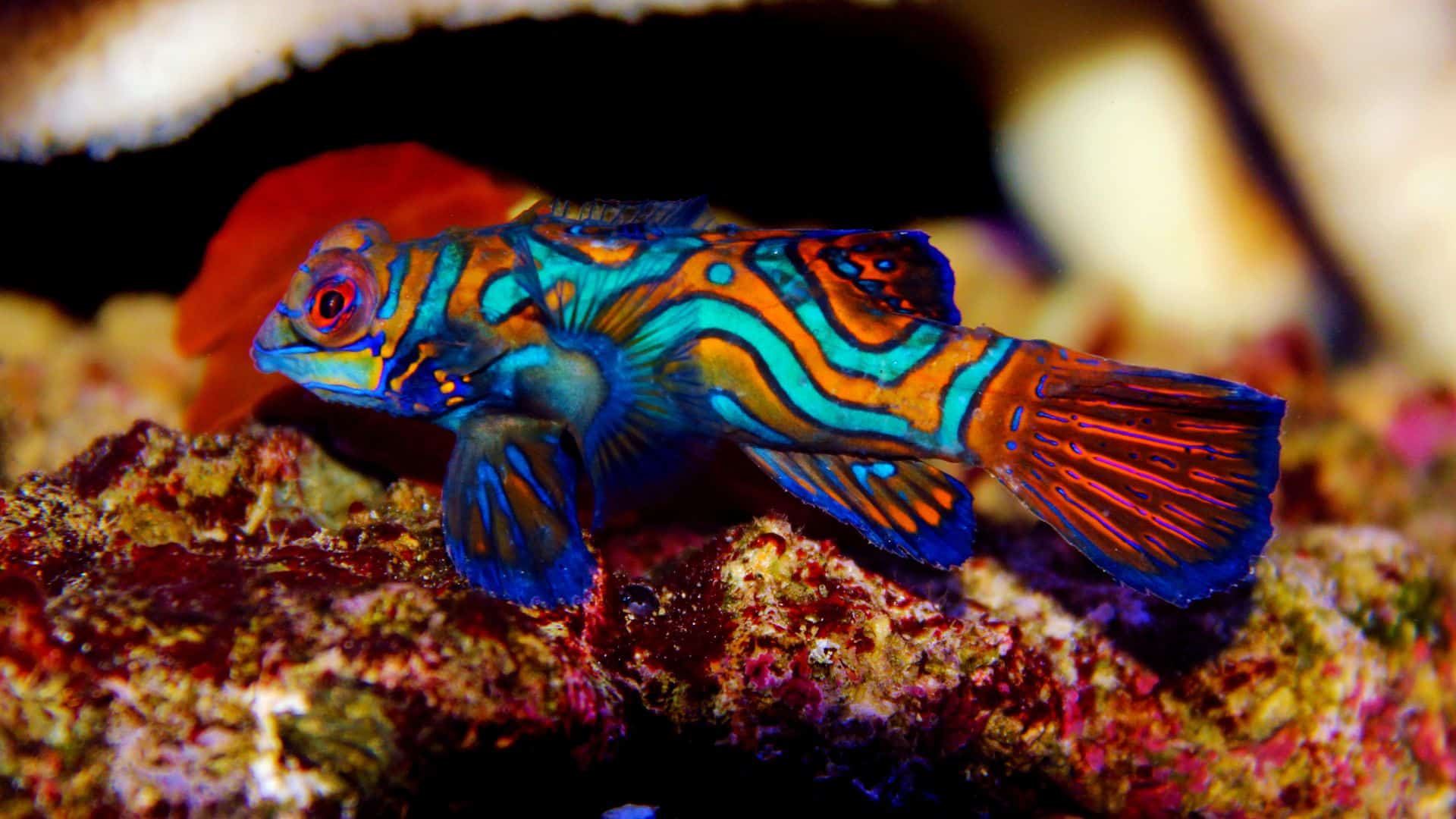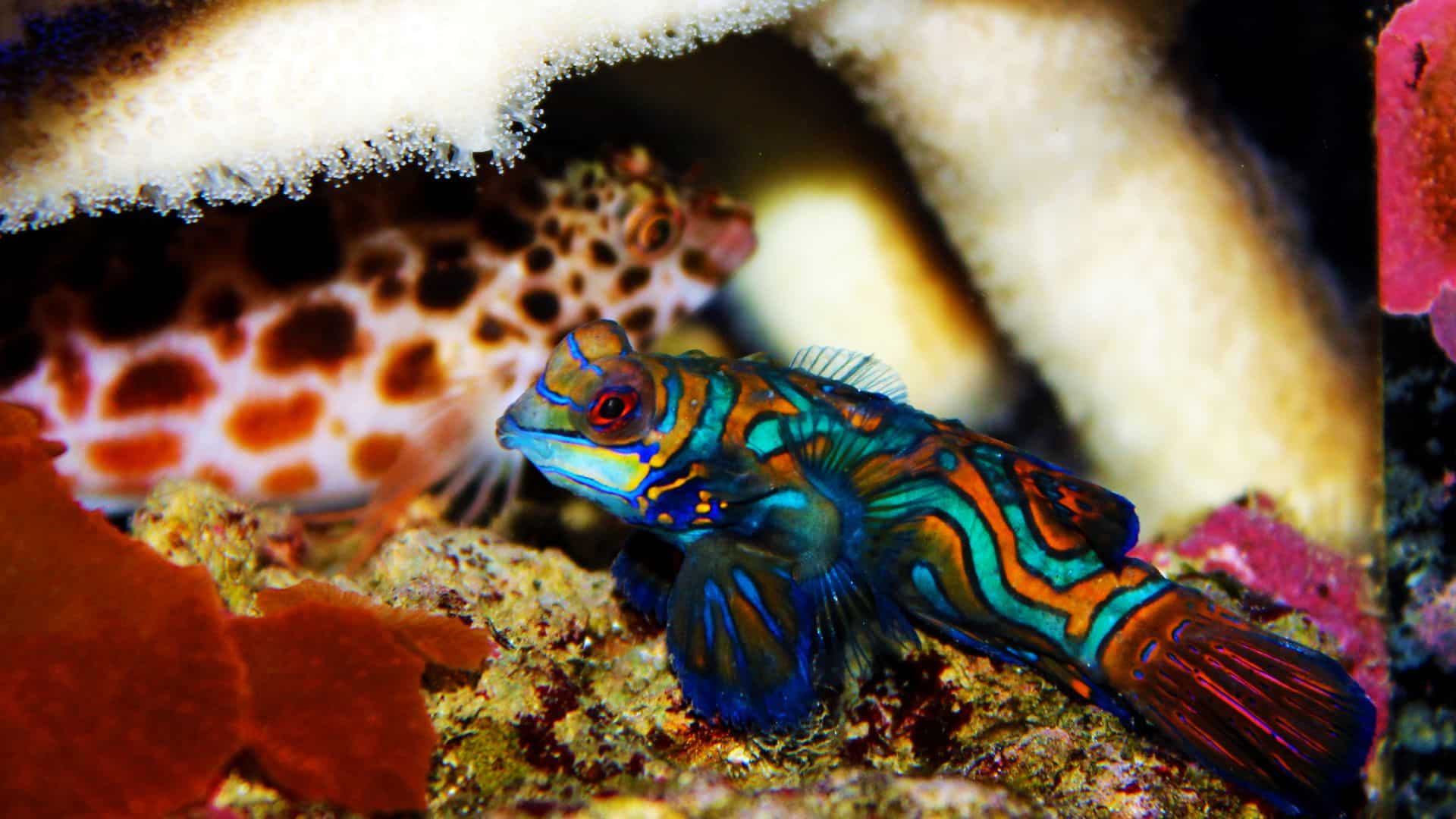Over 7.2 million American households have fish tanks; is yours one of them? If so, you might be someone who’s always on the lookout for vibrant and interesting specimens.
For saltwater aquariums, one interesting fish you might want to consider is the mandarin goby. This fish has such a wild splash of color across its body that it’s highly sought-after.
Thinking of getting a mandarin goby fish? Then keep reading. We’ll give you the ultimate guide on how to take care of one.
What Is the Mandarin Goby?

The mandarin goby is also known as the mandarin dragonet; its scientific name is Synchiropus splendidus. As its name implies, they’re quite splendid to look at. Not only do they come in an array of colors, but they also have different patterns, such as spotted or striped.
This fish originates from the Pacific Ocean, but since the fishkeeping industry is a lot more advanced nowadays, you can buy them from practically anywhere in the world. Expect to pay anywhere from $20 to $40 for one fish; the price will depend on the size and colors found on it.
As you’d expect, the mandarin goby is one of the most popular fish for enthusiasts. While they may be a little hard to take care of for beginners, they’re still generally considered an easy fish for tanks. This means practically any captive bred fish hobbyist can get them, so long as they have a saltwater tank!
What’s Their Temperament? What Are They Like?
The mandarin goby grows up to 4 inches long. Their lifespan will depend on which species you choose for your aquarium. Also, the good news is the mandarin goby is a peaceful fish. They can be shy, so make sure you have hiding places for them, such as caves and hidey holes; coral reefs make excellent hiding spots.
Furthermore, their good temperament means you can keep them with other similar fish. This hardy fish is a slow-moving one, so you won’t see it dash about the tank. They’ll spend the majority of their time finding food at the bottom of the tank. Even though they’re slow, you’ll still have a great time admiring their coloring from afar.
If you want to add more tankmates, make sure you do it slowly so they can adjust. Due to their shy nature, mandarin gobies can take a while to get used to new fish in their waters.
The bad news: the males can sometimes fight with one another, so if you pick a male, you’ll want to only have one in the tank. You can have one male with females, or females only in your aquarium to avoid trouble. If you want to have 2 males in your tank, then you have to ensure the area’s large enough where they can have their own territories.
Mandarin Goby Care: Maintaining a Healthy Population

Many aquarists love keeping Mandarin gobies in their aquariums due to their vibrant colors and unique patterns. However, it is important to provide proper care to ensure the well-being of these delicate fish.
This beautiful fish can be quite challenging to care for, as they have specific dietary requirements. Mandarin gobies primarily feed on small crustaceans and copepods, so it is crucial to establish a well-established population of these organisms in the aquarium.
Additionally, it is recommended to provide a suitable habitat with plenty of hiding spots and live rock for the Mandarin goby to feel secure and exhibit natural behavior.
Provide proper food sources
Gobies are picky eaters, so you need to make sure that they have access to a variety of live or frozen foods, such as brine shrimp and mysis shrimp. It is also important to regularly monitor water quality and maintain stable parameters, as Mandarin gobies are sensitive to changes in temperature and water chemistry.
You can use frozen foods as an alternative to live foods, as long as they are of high quality and provide the necessary nutrients. Additionally, it is recommended to avoid aggressive tank mates that may harass or out compete the Mandarin goby for food.
Feeding live foods and other fish that may nip at the Mandarin goby’s fins should also be avoided, as they can cause stress and potential injury to the goby.
Build a safe environment
There are different aquarium systems that can be used to create a safe environment for Mandarin gobies. Some options include a well-established reef tank with plenty of hiding places and live rock, or a dedicated species-only tank with a sand substrate and minimal decorations.
It is important to regularly monitor water parameters and perform regular water changes to maintain optimal conditions for the Mandarin goby’s health and well-being. Also, it is recommended to use a separate tank setup for quarantine and acclimation before introducing the Mandarin goby to the main tank.
Maintain the same water parameters as the main tank to ensure a smooth transition for the goby. Additionally, providing a varied diet consisting of live or frozen foods, such as copepods and mysis shrimp, is crucial for the Mandarin goby’s nutritional needs. This will help support its vibrant colors and overall vitality.
Find other reef fish for companion
Other fish can help provide social interaction for the Mandarin goby and create a more natural and diverse ecosystem within the tank. However, it is important to research and choose compatible fish species that have similar water parameter requirements and peaceful temperaments to ensure a harmonious coexistence.
Different Types of Mandarin Fish

The Mandarin goby is considered a shy fish because it tends to hide in crevices. It is known for its vibrant and intricate patterns, with a wide range of colors, including blue, orange, green, and yellow. Additionally, the Mandarin Goby is a slow swimmer and relies on its camouflage to blend in with its surroundings for protection from predators.
Striped mandarin fish
They have a vibrant combination of blue, orange, and white stripes that make them stand out in the ocean. Striped mandarin fish are also known for their small size and delicate appearance, making them a popular choice for aquarium enthusiasts.
Green mandarin fish
Green mandarin fish have a stunning emerald green coloration that helps them blend in with the lush vegetation in their natural habitat. They are also known for their ability to feed on small invertebrates, such as copepods and amphipods, which adds to their appeal as a unique and interesting species.
Blue mandarin fish
Blue mandarin fish are known for their striking electric blue coloration, which is often accented with vibrant orange and yellow patterns. They are highly sought after by hobbyists due to their stunning appearance and peaceful nature, making them a beautiful addition to any aquarium.
Psychedelic mandarin fish
Psychedelic mandarin fish, also known as psychedelic mandarinfish or psychedelic dragonet, are a species of small marine fish that possess a mesmerizing and vibrant coloration. Their bodies are adorned with a combination of vivid blue, orange, and green hues, creating a truly captivating sight.
This unique coloration not only adds to their visual appeal but also helps them blend in with the rocky crevices they inhabit. Additionally, like their blue mandarin counterparts, psychedelic fish have a specialized diet consisting of other invertebrates, which further contributes to their allure as an intriguing and sought-after species for aquarium enthusiasts.
Spotted mandarin fish
These fish are known for their distinctive pattern of black spots that cover their bodies, adding to their overall visual interest. Also, these spots can vary in size and shape, making each individual fish unique. The combination of their vibrant coloration and spotted pattern makes the spotted mandarin fish a true gem of the ocean, captivating divers and photographers alike.
Mandarin Dragonets
The Mandarine dragonets are a group of small, colorful fish that belong to the Callionymidae family. They are highly sought after by aquarium enthusiasts due to their striking appearance and unique behavior. These fish have elongated bodies with vibrant colors ranging from electric blue to bright orange, making them stand out in any tank.
Moreover, Mandarin dragonets are known for their fascinating mating rituals, where the males perform intricate dances to attract females. Their mesmerizing beauty and captivating behavior make them a prized addition to any aquarium.
What Does A Mandarin Fish Eat?

This type of fish eats worms, copepods, fish eggs, and small snails. The mandarin goby will feed throughout the day whenever they can find any food.
In the past, it was thought that the mandarin goby could survive solely off of copepods from live rock. But the problem was they’d soon deplete the whole take of the copepods, and then they’d starve to death since they had no food left.
Today, goby enthusiasts have found a better way to feed them. In addition to copepods from live rock, aquarists also feed their gobies live brine shrimp and frozen Mysis shrimp.
If you decide to go this route, you’ll have to wean your amazing fish to get them accustomed to this new food. When feeding them anything that’s frozen, make sure you thaw it first. That way, it won’t mess up the temperature of the tank.
Reef Aquarium Setup: What Are Their Tank Requirements?
A good rule of thumb is to house your mandarin gobies in a tank that’s at least 20 gallons. They love to have plenty of room to swim around in, so the bigger tank you can get, the better. An optimal tank size would be 29 gallons or more.
You should keep the tank at a temperature between 72 to 82 degrees. Since they’re sensitive to the water they’re kept in, you’ll want to check the water temperature daily as well as the filter and other equipment you have in your tank.
The water quality will be more forgiving; you only need to check it every week. Another thing you’ll need to do is change around 25% of the water every few weeks or so to keep it clean.
And, again, since the mandarin goby is shy, you’ll want to introduce new specimens to the tank slowly so they adjust better. Make sure you don’t have larger fish that eat the same food, as they won’t be able to be fed properly if you do.
Good Tankmates for the Mandarin Goby
In general, most fish that are the same size as the mandarin goby are good candidates as tankmates. Since they aren’t competitive with food, you’ll also want to find tank mates that are peaceful feeders.
Here’s a nice list to work from if you’re wondering about the compatibility of your colorful fish with the mandarin goby:
- Green Chromis
- Pajama Cardinals
- Small Damselfish
- Clownfish
- Firefish
- Coral Beauties
- Royal Gammas
- Watchman Goby
While you should have love live rocks and coral reefs in your aquarium, avoid putting anemones in. They can eat your mandarin gobies.
Get a Mandarin Goby or Two for Your Tank
As you can see, the mandarin goby is a must-have for any reef tank. They’re extremely beautiful, plus they’re peaceful. If you do decide to get these magnificent creatures, just make sure to follow our guide. By providing an optimal environment for them, you’ll see them thrive. Please check out our other blog posts.
Can Your Mandarin Fish Eat Baby Brine Shrimp?
A Mandarin can eat copepods and other small invertebrates found in the wild, but it may not readily consume brine shrimp. Mandarin fish have specialized feeding habits and prefer live food that mimics their natural diet.
While baby brine shrimp can be offered as a supplement, it is important to ensure a varied diet that includes copepods and other suitable live foods to meet their nutritional needs.
They are slow swimmers and provide the Mandarin fish with the opportunity to exhibit their natural hunting behavior. Moreover, the high protein content in copepods helps support the Mandarin fish’s growth and overall health.
Live Copepods: How Many Copepods Can They Eat?
Mandarin cobies rarely accept prepared foods, and they rely heavily on live copepods for their diet. It is recommended to provide a constant supply of copepods, as Mandarin fish can consume large quantities throughout the day. However, it is important to avoid overfeeding, as excess uneaten copepods can lead to poor water quality in the aquarium.
Using a live copepod population can help mimic the natural environment of the Mandarin fish and provide them with a continuous source of food. Plus, incorporating live copepods into their diet can also stimulate their natural hunting instincts, keeping them active and engaged in their surroundings.
Other foods, like Nutrimar Ova (prawn eggs) can also be offered as a supplement to copepods. These foods provide additional nutrients and variety to the Mandarin fish’s diet, ensuring they receive a well-rounded nutritional intake. For more information on mandarin gobies, this interesting blog post has some quality details on these interesting creatures.
Last Updated on 16/03/2025 by Karen Snow
Hi! I’m Karen and a certified dog lover. As a freelance writer and blogger, I do my best to squeeze in some time with my dogs, learning more about the way they act and how I can make sure that they continue to stay well-cared for by yours truly.
My dogs have helped me through a lot, and this is my way of giving back to them! Besides animals, I also love to travel and cook, having explored my country’s restaurants and unique places. Follow me as I show you all the amazing tips and bits of information I learn along the way about our furry friends!
